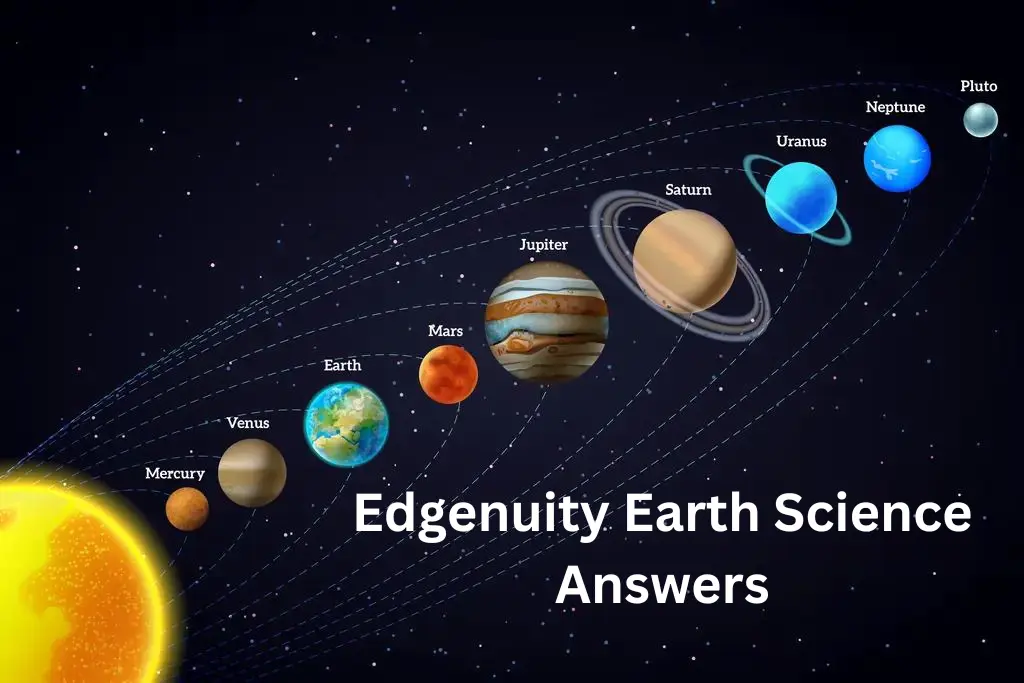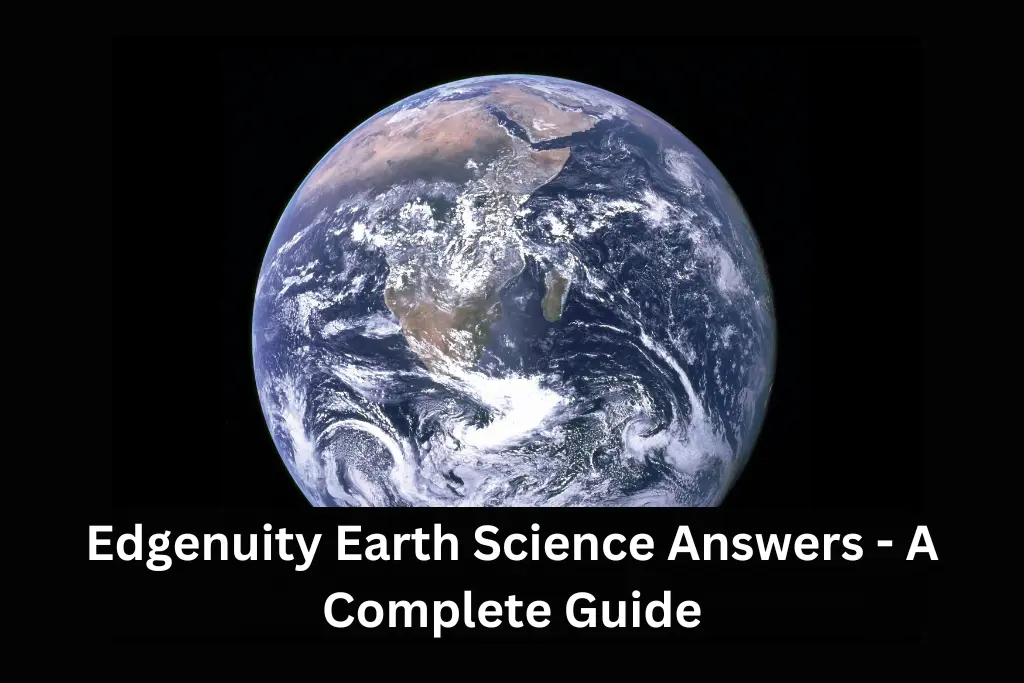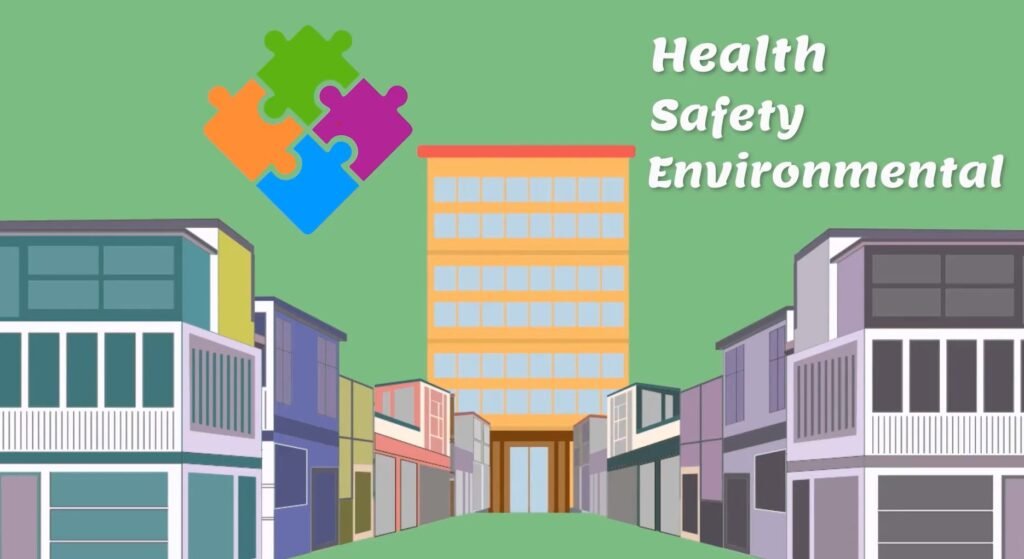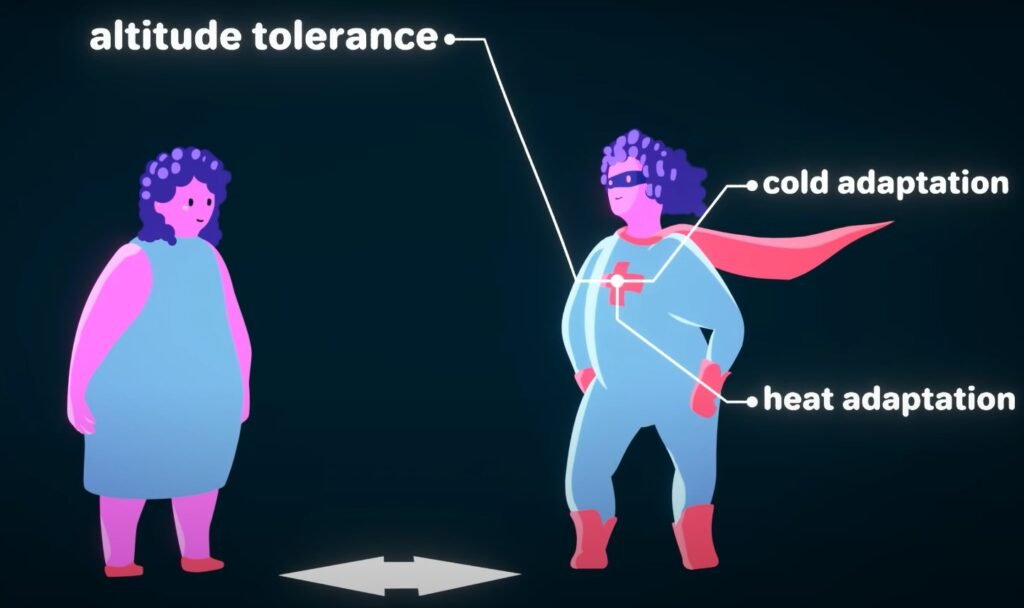Edgenuity Earth Science Answers – A Detailed Guide
Are you prepared to learn the universe of Earth Science? Whether you’re a passionate student committed to academic success or an individual inspired by our planet, Edgenuity Earth Science answers await as your guiding beacon.
Edgenuity Earth Science is a comprehensive online course that teaches students about the scientific principles of our globe and the vastness of the universe. This course covers many topics such as geology, meteorology, astronomy, and environmental science, providing students with a thorough grasp of the Earth’s processes, the solar system, and the interconnection of many natural occurrences.

What Are Edgenuity Earth Science Answers?
Edgenuity Earth Science answers course is a comprehensive online curriculum that covers a wide range of scientific topics, such as
- The structure and makeup of the Earth.
- Our planet’s geological history.
- Processes of plate tectonics and weathering.
- The biosphere and hydrosphere of the Earth.
- Exploration of the atmosphere and natural resources on Earth
What Is the Use of Edgenuity Earth Science Course?
This course aims to offer students a thorough understanding of the Earth and its place in the universe while preparing them for more advanced science courses. This curriculum is organized into seven units, each with a different emphasis:
- Understanding the Cosmos
- The Earth’s History
- Plate Tectonics and Earth’s Structure
- Erosion and weathering
- The Biosphere of the Earth
- Part 1 of the Earth’s Hydrosphere
- Part 2 of Earth’s Hydrosphere Earth’s Atmosphere Natural Resources
Each unit includes several lessons that include various learning activities such as movies, simulations, quizzes, and assignments.
Why Is the Study of Edgenuity Earth Science Answers Important?

Edgenuity Earth Science answers, or any comprehensive science course covering related themes, is significant for many reasons:
1- Understanding Earth and the Universe
Earth Science teaches students about the science behind our globe and the broader universe. It enables people to comprehend the mechanisms that regulate our environment and the universe.
2- Environmental Awareness

The importance of environmental protection and sustainability is emphasized in this course. Students learn about the Earth’s delicate balance and the environmental consequences of human actions. It gives students the knowledge and awareness they need to make sound decisions about environmental challenges.
3- Scientific Literacy
Earth Science answers promotes scientific literacy by introducing students to the scientific method, important thinking, and problem-solving techniques. These abilities are required for assessing complex real-world challenges and making sound decisions.
4- Opportunities
A solid foundation in Earth Science answers can lead to a variety of employment paths. It prepares students for professions in geology, meteorology, environmental science, astronomy, and natural resource management, among other subjects.
5- Global Difficulties
As our globe faces various global difficulties, including climate change and natural disasters, knowing the principles presented in this course is important for addressing and mitigating these issues. It allows people to contribute to solutions and adapt to a changing world.
6- Scientific Inquiry
Earth Science encourages students to ask questions, investigate, and conduct experiments. This scientific inquiry method fosters a sense of curiosity and a desire to seek solutions, both of which are necessary attributes for lifelong learning.
7- Interdisciplinary Knowledge
Earth Science is intrinsically interdisciplinary, including components of physics, chemistry, biology, and mathematics. This multidisciplinary approach gives children a comprehensive understanding of the world and how different scientific disciplines interact.
8- Space Exploration

Understanding Earth Science is becoming increasingly important as humanity continues to explore space and prepare for trips to other worlds. It lays the groundwork for understanding the problems and prospects of space travel.
Tips for Finding Edgenuity Earth Science Answers
Here are some tips for finding answers and understanding the underlying concepts in the Edgenuity Earth Science answers course:
1- Examine Course Resources
Examine the course resources, such as textbooks, films, and interactive simulations, to obtain a firm understanding of the ideas and to find answers to specific issues.
2- Utilize Online Resources
The internet is a tremendous source of Earth and Space Science knowledge. Use reliable websites, educational platforms, and scientific magazines to broaden your knowledge and get solutions to specific questions.
3- Interact with Your Instructor
Your instructor is a great resource for clarifying course content and answering questions. Please do not hesitate to contact them if you require additional information, help, or clarification.
4- Collaborate in Study Groups
Encourage peer collaboration through study groups or online forums. Engaging in talks about concepts and exchanging insights will help you understand them better and find answers to difficult issues.
5- Embrace Active Learning
Use active learning tactics such as summarizing key points, constructing concept maps, and applying concepts to real-world circumstances. This active participation will strengthen your understanding, making it easier to respond to queries.
6- Seek Additional Help
If you have trouble answering specific questions, consider seeking help from tutors, online learning platforms, or educational support services.
At What Grade Level Is Earth Science Answers Taught?
Depending on the educational system and curriculum in a particular country, Earth Science is often taught at various grade levels. Earth Science is routinely presented at different grade levels in the United States, but it usually appears as a separate course in high school.
- Elementary School: Fundamental Earth scientific ideas are usually included in the scientific curriculum of elementary schools, typically in the lower grades, when students learn about topics such as the water cycle, rocks and minerals, and fundamental astronomy.
- Middle School: In middle school, Earth Science themes get more specialized and complex. Students can learn about plate tectonics, weather patterns, and the structure of the Earth.
- High School: In many educational systems, Earth Science is taught as a stand-alone course in high school, usually as part of the science curriculum. Geology, meteorology, astronomy, environmental science, and other disciplines are covered in high school Earth Science classes.
The grade levels at which Earth Science is taught vary by school district and can be impacted by state or national educational requirements.
Conclusion
Edgenuity Earth Science is a comprehensive and interesting educational experience that allows students to study the science of our planet and the universe. This course dives into a wide range of topics, including geology, meteorology, astronomy, environmental science, and others, to create a thorough grasp of the Earth’s systems and location in the universe. Must use these tips to find out the Edgenuity Earth Science answers.
FAQs For Edgenuity Earth Science Answers
Here are some detailed FAQs about Edgenuity Earth Science Answers:
What questions can earth science answer?
Earth science, also known as geoscience, encompasses a wide range of inquiries about our planet. It can address questions related to the Earth’s structure, composition, processes, and interactions. Some key questions that earth science can answer include:
Origin and Evolution: Earth science explores the origin and evolution of the Earth, addressing questions about the formation of the planet and changes over geological time scales.
Natural Hazards: It helps predict and understand natural disasters such as earthquakes, volcanic eruptions, tsunamis, hurricanes, and landslides, enabling better risk assessment and mitigation.
Climate and Weather: Earth science investigates atmospheric conditions, climate patterns, and weather phenomena, providing insights into climate change, weather forecasting, and the impact of human activities on climate.
Resource Management: It plays a crucial role in the exploration and sustainable management of Earth’s natural resources, including minerals, water, and energy sources.
Environmental Impact: Earth science assesses the impact of human activities on the environment, aiding in the development of strategies for environmental conservation and sustainable practices.
What are the 5 topics of earth science?
The five main topics of earth science include:
Geology: Study of the Earth’s solid materials, including rocks, minerals, and the processes that shape the Earth’s structure over time.
Meteorology: Examination of the Earth’s atmosphere, focusing on weather patterns, atmospheric phenomena, and climate.
Oceanography: Exploration of the Earth’s oceans, covering ocean currents, marine life, and the physical and chemical properties of seawater.
Astronomy: Investigation of celestial bodies, such as planets, stars, and galaxies, and their interactions with the Earth.
Environmental Science: Study of the Earth’s environment and ecosystems, including the impact of human activities on the planet’s health.
Is Earth Science a good major?
Yes, Earth Science can be a rewarding and valuable major. It provides a multidisciplinary understanding of the Earth and its processes, making graduates well-equipped to address pressing global challenges such as climate change, resource management, and environmental sustainability.
Careers in geology, meteorology, oceanography, environmental consulting, and natural resource management are common for Earth Science majors. Additionally, the interdisciplinary nature of the field can open doors to various industries, research institutions, and government agencies.
What are the 4 parts of earth science?
Earth science comprises four main branches:
Geology: The study of the Earth’s solid materials, including rocks, minerals, and the processes that shape the Earth’s structure.
Meteorology: The examination of the Earth’s atmosphere, weather patterns, and atmospheric phenomena.
Oceanography: The exploration of the Earth’s oceans, covering ocean currents, marine life, and the physical and chemical properties of seawater.
Astronomy: The investigation of celestial bodies, such as planets, stars, and galaxies, and their interactions with the Earth.
Is Earth Science hard?
The difficulty of Earth Science can vary based on individual interests, aptitudes, and the specific subfield chosen. While some aspects may pose challenges, the interdisciplinary nature of Earth Science allows individuals to explore different areas based on their strengths.
Fieldwork, data analysis, and a solid understanding of scientific principles are essential. However, with dedication, curiosity, and effective study habits, many find Earth Science to be a fascinating and manageable field of study.
What are the 4 major spheres?
Earth Science recognizes four major spheres, each representing distinct components of the Earth system:
Geosphere: Encompasses the solid Earth, including the rocks, minerals, and landforms on the planet’s surface.
Atmosphere: Refers to the Earth’s gaseous envelope, comprising layers of air that surround the planet.
Hydrosphere: Includes all the water on Earth, in the form of oceans, rivers, lakes, groundwater, and atmospheric water vapor.
Biosphere: Encompasses all living organisms on Earth and their interactions with the other spheres.
These spheres are interconnected, and studying their interactions is crucial to understanding the Earth as a complex and dynamic system.
More Reads






